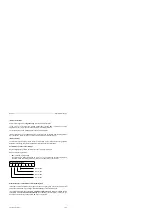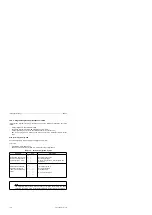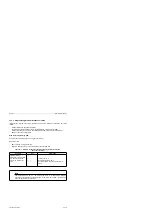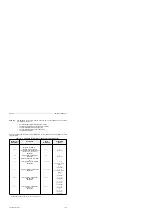
Interrupt Processing
S5-95F
Response Time for OB3 Interrupts
The response time for OB3 interrupts, T
OB3 response
, depends on:
•
the internal S5-95F delay for OB3 interrupts (max. 12 ms when no OB2 interrupts are used and
max. 16 ms when both OB2 and OB3 interrupts are used)
•
the execution time T
OB2
of organization block OB2
•
the execution time T
OB3
of organization block OB3
•
the number of interrupt input bytes n
bytes
used for interrupt processing with OB3
In the majority of applications, the programs in OB2 and OB3 are relatively short. The execution
time of OB2 is generally less than 0.2 ms and that of OB3 less than 10 ms. You can therefore
expect a
typical interrupt response time of 23 ms for OB3 interrupts.
If the execution times of OB2 and OB3 for your application differ from those assumed above, you
can calculate the interrupt response time using the following formulae.
Interrupt Response Time for OB3 Interrupts under Worst-Case Conditions
(OB3 Interrupts only)
Under worst-case conditions, the response time for OB3 interrupts if no OB2 interrupts are
used is
T
OB3 response, wort-case
12 ms+1.25×T
OB3
+1.5 ms×n
bytes
(n
bytes
=1, 2 or 3)
Interrupt Response Time for OB3 Interrupts under Worst-Case Conditions
(OB2 and OB3 interrupts)
Under worst-case conditions, the response time for OB3 interrupts when OB2 interrupts are
also used is
T
OB3 response, worst-case
= 16 ms+5×T
OB2
+1.25×T
OB3
+1.5 ms×n
bytes
(n
bytes
=1, 2, 3)
Minimum Signal Duration for OB3 Interrupts
Note
An OB3 interrupt is triggered by an edge at an OB3 interrupt input or when an onboard
counter reaches a specific comparison value.
The S5-95F detects the edge at an OB3 interrupt input under worst-case conditions
when signal states "0" and "1" have a duration of
at least (5 ms + T
OB3 response
); in
the case of counters, signal levels "0" and "1" must have a duration of at least
1.4 ms. For this reason, be sure to use suitable sensors and optimize OB2 and OB3 for
the shortest possible execution time.
12-16
EWA 4NEB 812 6210-02
















































